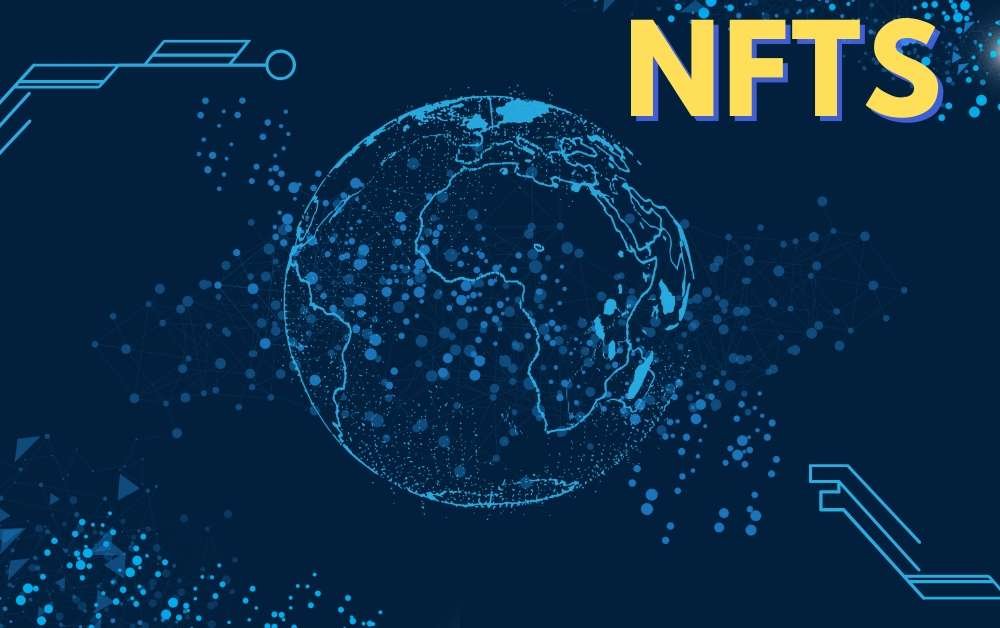A Deep Dive into the Rise of NFTs and Blockchain Technology


Introduction to NFTs and Blockchain Technology
The world of digital assets has experienced a revolutionary transformation with the advent of Non-Fungible Tokens (NFTs) and blockchain technology. In this article, we will delve into the rise of NFTs and explore how blockchain technology has revolutionized various industries. NFTs have gained immense popularity in recent years, particularly in the digital art market. We will analyze the benefits and challenges of NFTs, understand how blockchain technology supports the NFT ecosystem, and explore the use cases beyond digital art. Furthermore, we will analyze the impact of NFTs on the music and gaming industries, discuss popular NFT marketplaces and platforms, and evaluate the opportunities and risks associated with investing in NFTs. Finally, we will discuss future trends and predictions for NFTs and blockchain technology.
Understanding Non-Fungible Tokens (NFTs)
To comprehend the rise of NFTs, it is essential to understand what they are and how they work. Unlike cryptocurrencies such as Bitcoin or Ethereum, which are fungible and can be exchanged on a one-to-one basis, NFTs are unique and indivisible. Each NFT represents a distinct digital asset, such as artwork, music, videos, or even virtual real estate. The uniqueness of NFTs is made possible by blockchain technology, which ensures the scarcity and provenance of these digital assets. This uniqueness has sparked a wave of interest and excitement among artists, collectors, and investors.
The digital art market has been transformed by the emergence of NFTs. Artists can now create, tokenize, and sell their artwork directly to collectors, eliminating the need for intermediaries such as galleries or auction houses. The concept of owning a digital piece of art, verified and secured by blockchain technology, has opened up new possibilities for both artists and collectors. NFTs have provided artists with a new revenue stream and increased exposure, while collectors can now own and trade digital artworks with a clear record of ownership and authenticity. The rise of NFTs in the digital art market has challenged traditional notions of art ownership and has sparked a global conversation about the value and perception of digital art.
Exploring the Benefits and Challenges of NFTs
NFTs offer several benefits to artists, collectors, and investors. For artists, NFTs provide a new way to monetize their creativity and reach a global audience. They can receive royalties every time their NFT is resold, ensuring a long-term revenue stream. Collectors, on the other hand, gain ownership of unique digital assets, which can be displayed proudly in their digital collections. NFTs also provide a transparent and immutable record of ownership, eliminating the risk of counterfeit or stolen art. However, NFTs also present challenges. The environmental impact of blockchain technology used in NFTs has raised concerns, as it requires substantial energy consumption. Additionally, the potential for fraud and copyright infringement in the NFT space remains a significant challenge that needs to be addressed.
How Blockchain Technology Supports the NFT Ecosystem
Blockchain technology plays a crucial role in supporting the NFT ecosystem. It ensures the provenance and authenticity of digital assets by creating an immutable record of ownership on a decentralized ledger. Each transaction involving an NFT is recorded on the blockchain, providing a transparent and traceable history. This transparency and security have instilled trust among artists, collectors, and investors, fostering the growth of the NFT market. Additionally, blockchain technology enables smart contracts, which automate various aspects of NFT transactions, such as royalties and licensing agreements. The decentralized nature of blockchain technology also eliminates the need for intermediaries, reducing costs and increasing efficiency in the NFT ecosystem.
NFT Use Cases Beyond Digital Art
Although NFTs gained prominence in the digital art market, their use cases extend beyond the realm of artwork. NFTs have found applications in various industries, including music and gaming. In the music industry, NFTs allow artists to tokenize their music, granting ownership rights and unique experiences to fans. Artists can release limited edition albums or offer exclusive concert tickets as NFTs, creating a new revenue stream and strengthening the bond with their fan base. Similarly, in the gaming industry, NFTs enable the ownership and trading of in-game assets. Players can buy, sell, and trade virtual items, making the gaming experience more immersive and allowing players to monetize their achievements.
Analyzing the Impact of NFTs on the Music and Gaming Industries
The impact of NFTs on the music and gaming industries has been significant. In the music industry, NFTs have offered artists an alternative to traditional revenue streams, which have been heavily impacted by streaming platforms. NFTs provide a direct connection between artists and fans, enabling a more personalized and exclusive experience. Furthermore, NFTs have given rise to a new model of crowdfunding, where artists can raise funds for their projects by pre-selling NFTs. In the gaming industry, NFTs have revolutionized the concept of virtual ownership. Players can now truly own their in-game assets and trade them freely. This has created new opportunities for game developers to monetize their creations and for players to earn real-world value from their gaming achievements.

NFT Marketplaces and Platforms
To facilitate the buying, selling, and trading of NFTs, various marketplaces and platforms have emerged. These platforms serve as digital marketplaces where artists can mint and sell their NFTs, and collectors can browse and purchase them. Some popular NFT marketplaces include OpenSea, Rarible, and SuperRare. These platforms have witnessed a surge in activity, with millions of dollars being transacted daily. Additionally, established companies and brands have also entered the NFT space, offering their own exclusive collections or partnering with artists to create unique NFTs. The growth of NFT marketplaces and platforms has further fueled the rise of NFTs and expanded the reach of digital assets.
Investing in NFTs: Opportunities and Risks
The popularity of NFTs has attracted a significant amount of attention from investors, seeking to capitalize on the potential value appreciation of digital assets. Investing in NFTs can offer opportunities for substantial returns, especially for rare and highly sought-after NFTs. However, it is essential to approach NFT investments with caution and conduct thorough research. The NFT market is highly speculative and volatile, with prices fluctuating rapidly. Additionally, the lack of regulation and the presence of fraudulent activities pose risks to investors. It is crucial to understand the underlying value and demand for an NFT before making an investment decision. Diversification and a long-term perspective are key to navigating the NFT market successfully.
Future Trends and Predictions for NFTs and Blockchain Technology
The future of NFTs and blockchain technology is ripe with possibilities. As the technology continues to evolve and mature, we can expect to see further adoption of NFTs in various industries. The integration of NFTs into social media platforms, virtual reality experiences, and even real-world assets such as real estate is likely to become more prevalent. Additionally, advancements in blockchain technology, such as scalability and energy efficiency, will address the current challenges associated with NFTs. The rise of decentralized finance (DeFi) and the potential integration of NFTs with DeFi protocols present exciting opportunities for innovation and financial inclusion. The future of NFTs and blockchain technology holds immense potential, and we are only beginning to scratch the surface of what is possible.
Conclusion
In conclusion, the rise of NFTs and blockchain technology has transformed the digital asset landscape. NFTs have provided artists with new opportunities for monetization and collectors with unique digital assets. Blockchain technology has ensured the transparency, security, and immutability of these assets, fostering trust and confidence in the NFT ecosystem. The impact of NFTs extends beyond the digital art market, with applications in the music and gaming industries. NFT marketplaces and platforms have facilitated the buying, selling, and trading of NFTs, while investors navigate the opportunities and risks associated with this emerging market. The future holds immense potential for NFTs and blockchain technology, and we eagerly await the innovations and advancements that lie ahead.
Explore the world of NFTs and blockchain technology today and unlock the possibilities of digital ownership and creativity.








[…] NFT marketplaces serve as online platforms where users can buy, sell, and trade non-fungible tokens. Unlike traditional marketplaces, NFT platforms specialize in digital assets that are unique and indivisible, such as digital art, virtual real estate, collectible items, and more. These marketplaces leverage blockchain technology to ensure authenticity, provenance, and ownership of NFTs. […]
[…] In Web3, the internet isn’t just a network of interconnected devices; it’s a network of trust. It builds upon the foundation of decentralization, blockchain technology, and a commitment to privacy and security. But before we delve deeper into its intricacies, let’s rewind and understand how we got here. […]